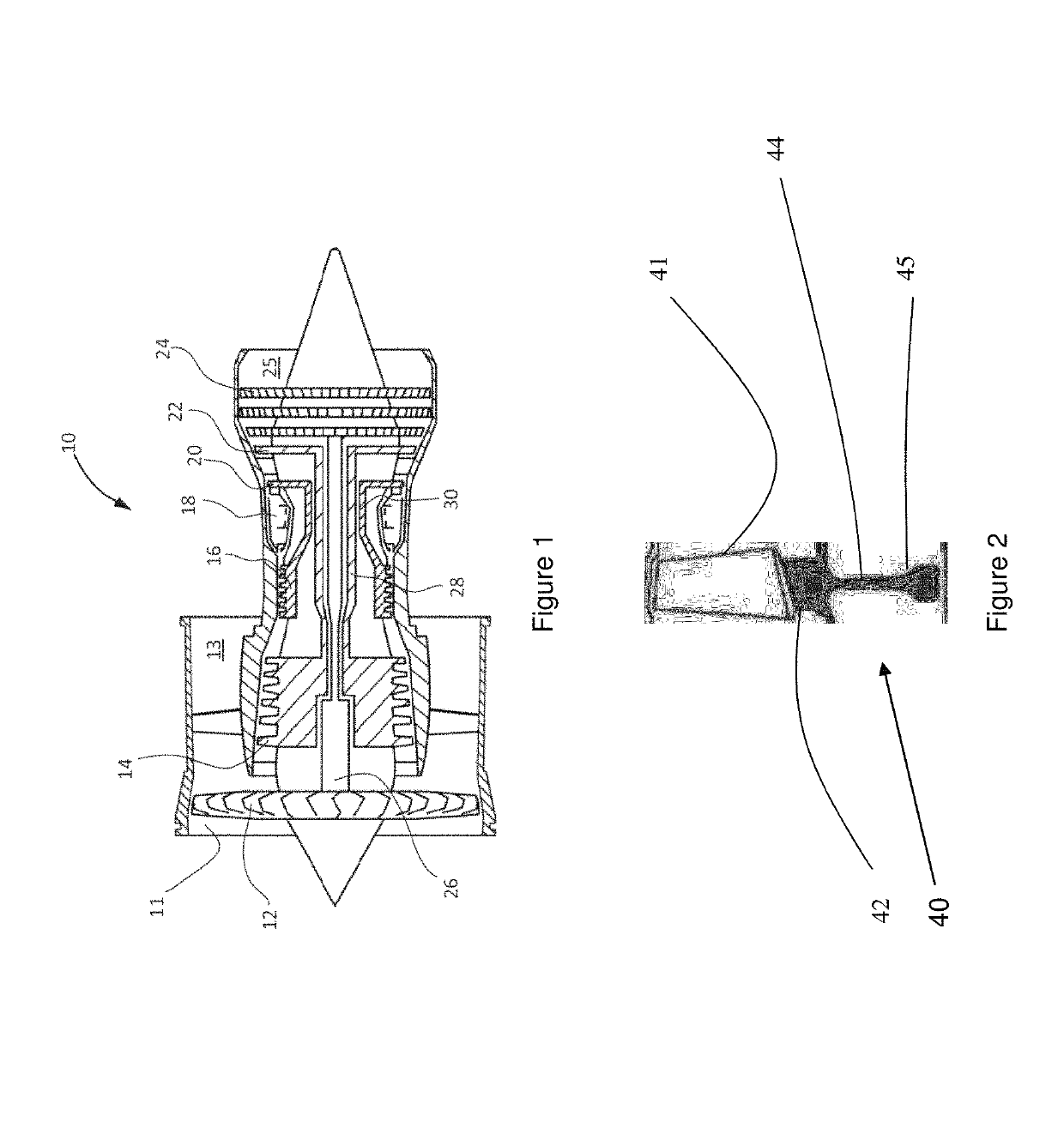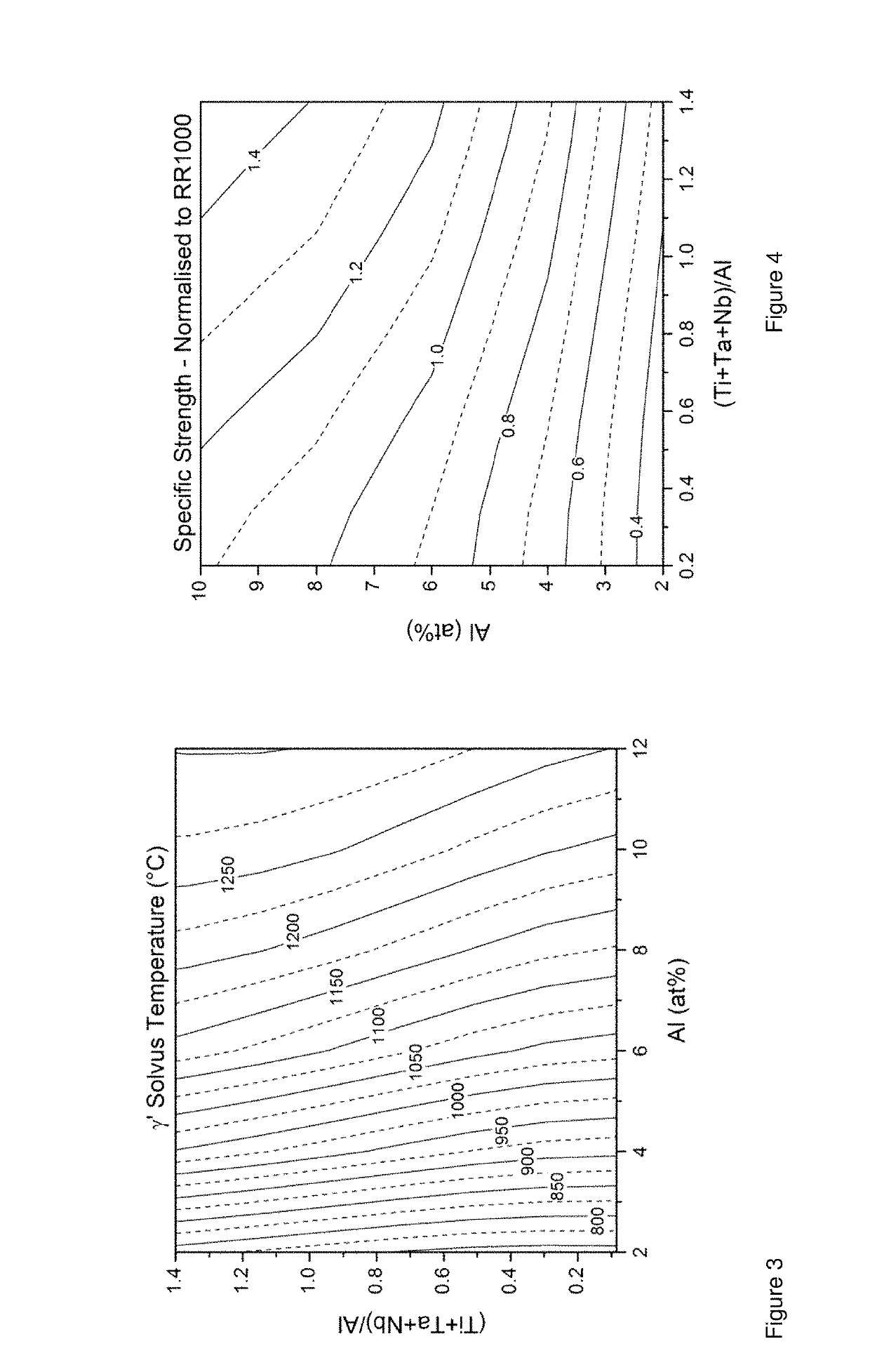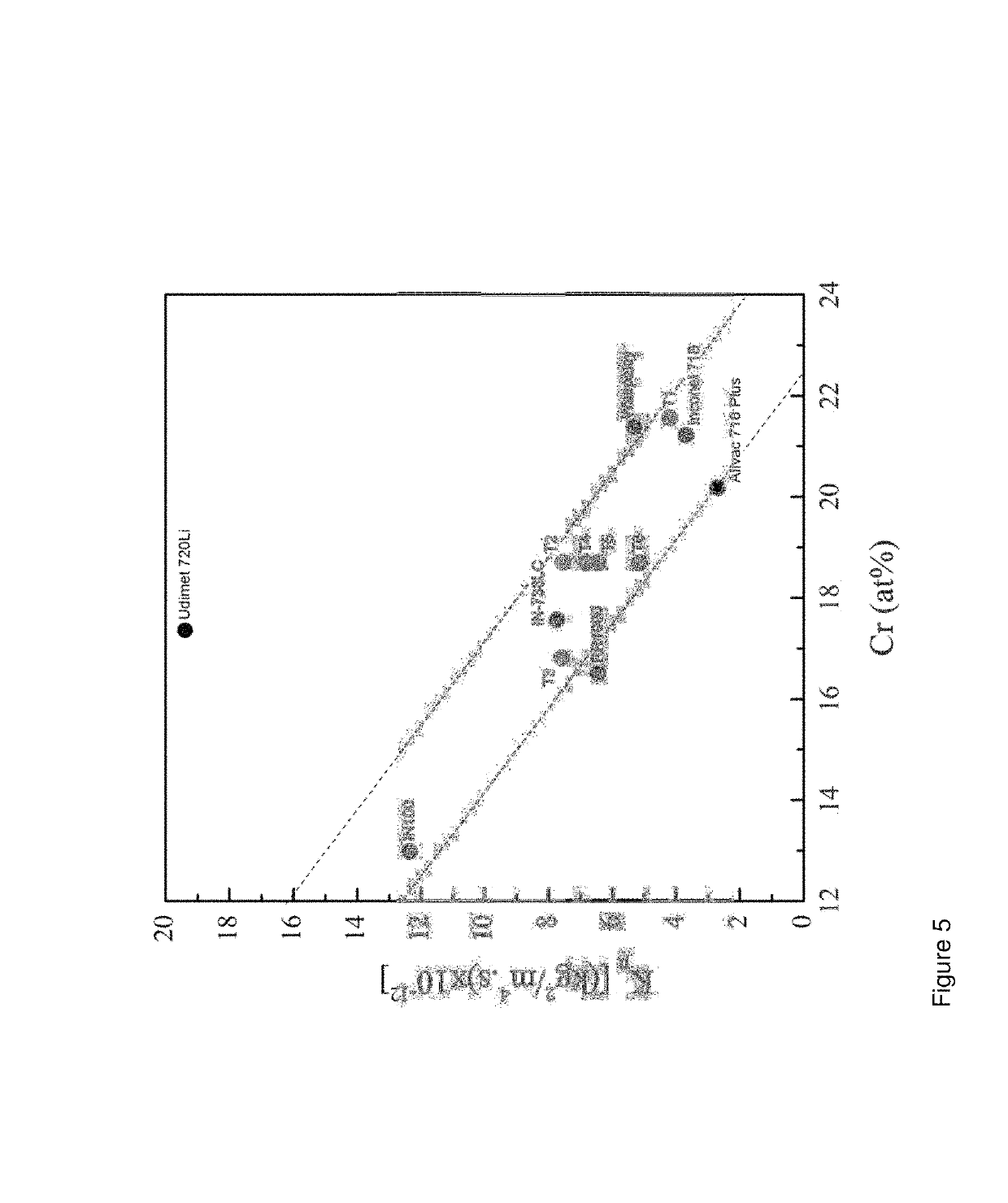Nickel based alloy composition
a technology of alloy composition and nickel based alloy, which is applied in the direction of engines, mechanical equipment, machines/engines, etc., can solve the problems of high crack growth rate insufficient yield strength of these alloys, and high rate of crack growth in discs made of prior alloys, etc., to achieve low cost, low “buy to fly” ratio, and low processing time and waste
- Summary
- Abstract
- Description
- Claims
- Application Information
AI Technical Summary
Benefits of technology
Problems solved by technology
Method used
Image
Examples
example alloy d1
EXAMPLE ALLOY D1
[0072]Alloy D1 represents a baseline composition for the alloy described within this disclosure. The alloy consists essentially of, in weight percent, 13.3 to 13.9% chromium, 16.2 to 16.8% cobalt, 2.9 to 3.5% tungsten, 3.1 to 3.5% aluminium, 2.9 to 3.3% titanium, 1.4 to 1.8% tantalum, 1.9 to 2.3% niobium, 0.01 to 0.05% carbon, 0.01 to 0.04% boron, 0.05 to 0.07% zirconium, with the balance being nickel and incidental impurities.
[0073]Alloy D1 has been designed with an equal weighting considered for all material properties. The sum of γ′ forming elements (Al+Ti+Ta+Nb) equal to 12.5 at % producing an alloy with 54% volume fraction of γ′, the ratio of (Ti+Ta+Nb) / Al is 0.79. The alloy has at least a 14% improvement in specific yield strength when compared to RR1000 in a coarse grained microstructure at all temperatures. The sum of Co+Cr+Mo+W is equal to 32 at % for creep resistance. The Cr level is 15 at % with the ratio of Cr / Ti in atomic percent fixed at 4 to attain an ...
example alloy d2
EXAMPLE ALLOY D2
[0075]Alloy D2 has been designed with a bias toward low density and increased oxidation resistance. The alloy consists essentially of, in weight percent, 14.4 to 15% chromium, 14.3 to 14.9% cobalt, 2.3 to 2.9% tungsten, 3.6 to 4.0% aluminium, 3.2 to 3.6% titanium, 1.4 to 1.8% tantalum, 1.4 to 1.8% niobium, 0.01 to 0.05% carbon, 0.01 to 0.04% boron, 0.05 to 0.07% zirconium, with the balance being nickel and incidental impurities.
[0076]The improved oxidation resistance was achieved by increasing the Cr level and Cr / Ti ratio in the alloy. This oxidation resistance was improved at the expense of creep resistance with levels of Co and W being reduced to maintain microstructural stability. Lower density alloys are desirable for aerospace applications; density was reduced by decreasing the W content and increasing the Al content. The reduction in APB energy due to a lower (Ti+Ta+Nb) / Al ratio to 0.69 was offset by an increase in Al+Ti+Nb+Ta equal to 13.5 at %, increasing the...
example alloy d3
EXAMPLE ALLOY D3
[0077]Alloy D3 has been designed with a bias towards creep resistance. The alloy consists essentially of, in weight percent, 10.4 to 11.0% chromium, 16.9 to 17.5% cobalt, 4.3 to 5.0% tungsten, 3.5 to 3.9% aluminium, 3.1 to 3.5% titanium, 2.9 to 3.3% tantalum, 1.4 to 1.8% niobium, 0.01 to 0.05% carbon, 0.01 to 0.04% boron, 0.05 to 0.07% zirconium, the balance being nickel and incidental impurities.
[0078]The improvements in creep resistance have been achieved by increasing the level of W and Co in the alloy. The increase in creep resistance has been achieved at the expense of oxidation resistance and density. The Cr content and the Cr / Ti ratio have been reduced, Cr was reduced in order to maintain alloy stability. Higher levels of γ′ have also been utilised in order to improve creep strength, the γ′ level has been increased by using additions of Al in order to offset the increases in density attained from high levels of W. This alloy has improved mechanical properties ...
PUM
| Property | Measurement | Unit |
|---|---|---|
| operating temperature | aaaaa | aaaaa |
| operating temperature | aaaaa | aaaaa |
| temperatures | aaaaa | aaaaa |
Abstract
Description
Claims
Application Information
 Login to View More
Login to View More - R&D
- Intellectual Property
- Life Sciences
- Materials
- Tech Scout
- Unparalleled Data Quality
- Higher Quality Content
- 60% Fewer Hallucinations
Browse by: Latest US Patents, China's latest patents, Technical Efficacy Thesaurus, Application Domain, Technology Topic, Popular Technical Reports.
© 2025 PatSnap. All rights reserved.Legal|Privacy policy|Modern Slavery Act Transparency Statement|Sitemap|About US| Contact US: help@patsnap.com



